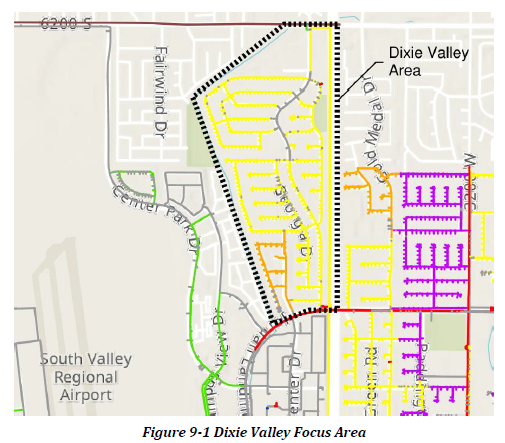The Environmental Protection Agency's (EPA) Lead and Copper Rule limits the concentration of lead and copper allowed in public water systems. In 2020, the EPA finalized the first major update to the Lead and Copper Rule in over 30 years, increasing the requirements for public water providers. The new requirements have now been shifted to completely eliminate lead pipes, rather than reducing them. In December 2021, the EPA announced further clarifications titled Lead and Copper Rule Improvements. Water providers are being asked to eliminate lead service lines as quickly as feasible.
While some requirement details are still being determined, the following provides a summary of the requirements the City will be facing.
• Lead and Copper Line Inventory - The City is required to conduct an inventory and make public the locations of lead service lines by October 2024. This public knowledge is to allow communities to make informed decisions and reduce lead exposure. Residents with a known lead service line are to be notified and given information on how they can reduce their exposure.
• Increased Testing Requirements - Historical sampling methods could underestimate lead in drinking water. New requirements state that samples be taken from homes with known lead service lines and increased flushing occur before a sample is taken. Four liters of water must be pulled from the source to assure that the water being sampled is being pulled from the lead service line and not from the internal plumbing of the building. When a sample at an individual home exceeds 15 ppb, the City must conduct a follow-up sampling as part of a find- and-fix process.
• New Trigger Actions - A new threshold of 10 ppb has been established that, when exceeded, triggers required actions to reduce corrosion. This threshold requires the system to re- optimize their corrosion control if equipped or requires that the system conduct a corrosion control study to identify the best treatment approach. If the trigger is met again in the future, the system is required to immediately implement the study's recommendations.
• State Replacement Requirements - In addition to the corrosion re-optimization or study, if the system tests above the 10 ppb threshold, state specific replacement requirements will be established. The State of Utah has not yet established what requirements will be, but those will be coming soon.
• EPA Replacement Requirements - Should 10 percent of sampling results pass above a 15 ppb threshold, the City will be required to have a replacement plan in place and start replacing lines as soon as sample results are above 15 ppb. The City cannot avoid replacing service lines through testing and will be required to replace the water system-owned portion of a lead service line when a customer chooses to replace their customer-owned portion of the line. Also, partial service line replacement will no longer meet the requirements.
• Required Timely Notification of Homeowner - If a sample passes the 15ppb of lead threshold, the City will be required to notify the residence within three days, so that steps to reduce lead exposure can be taken immediately.
• Focus on Schools & Childcare - Lead exposure is dangerous to both children and adults, but new requirements are placing an emphasis on locations where children spend large amounts of time, at schools and childcare locations. At least 20% of schools and childcares are required to be tested each year.
Given the additional requirements of the Lead and Copper rule, it is imperative that the City take preemptive measures to stay ahead of requirements. A list of service lines that have reached their expected life and may contain lead or copper are listed in the appendix of this report. One area that has been identified by City staff as a priority is the Dixie Valley area as shown in Figure 9-1.

The Dixie Valley area (6200 South to 7000 South, Bangerter Highway to Campus View Drive) has been identified as a large area with lead service lines. This area should be prioritized for lead removal and work should begin as soon as practicable.
In summary, City action required by the Lead and Copper Rule are as follows:
1. Complete lead and copper inventory by October 2024. This is a hard deadline that must be met by the City and will assist it in developing a detailed plan for subsequent actions.
2. Begin process of replacing lines with lead and copper issues. While regulations are still being developed that will determine the required timing of lead and copper elimination, it is certain that the City will need to budget for at least some action in this regard in the upcoming years. Replacing pipelines in the Dixie Village Area will be a good start.
3. Implement additional actions as required based on sampling results. Depending on sampling results, there may be some additional action required of the City as outlined above.